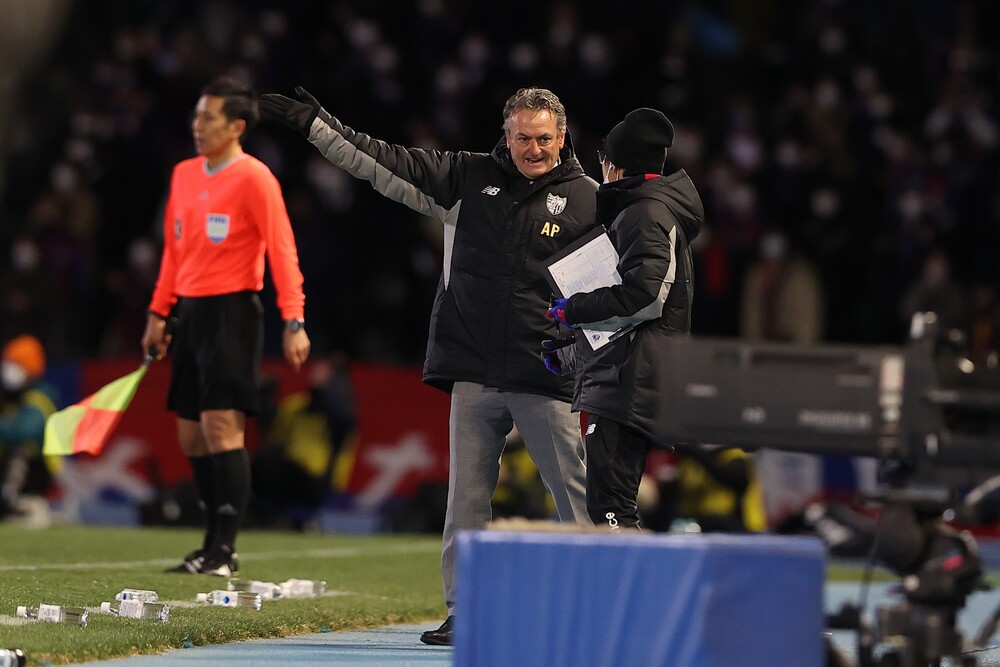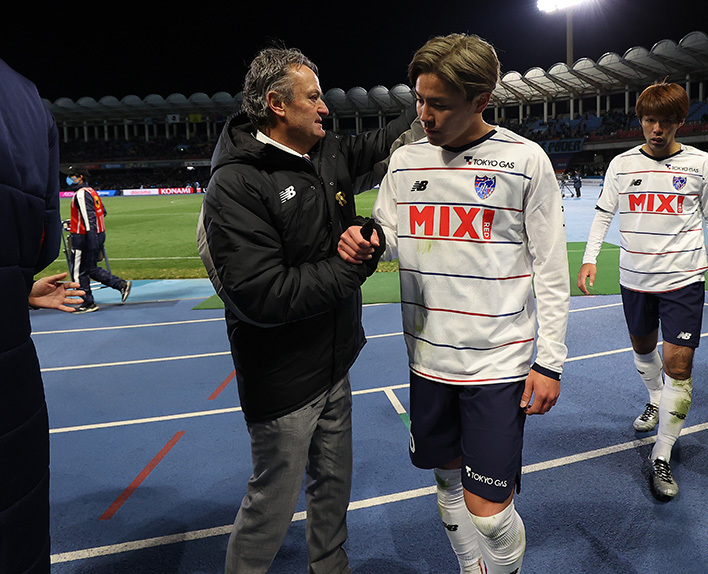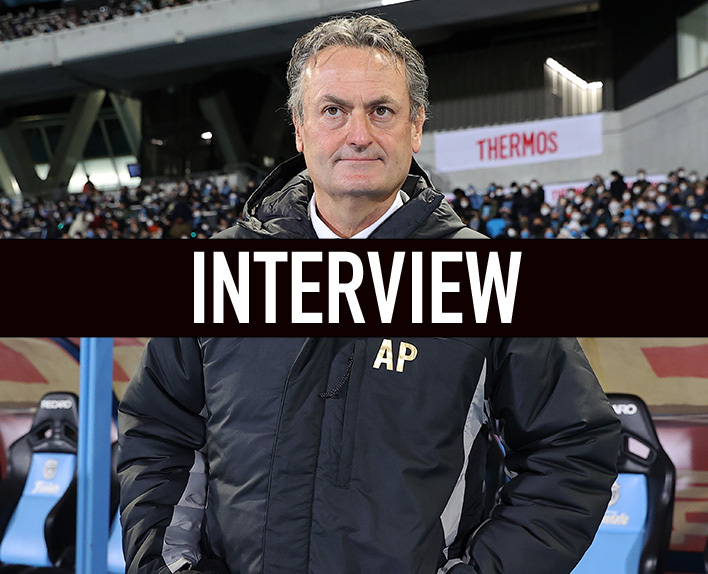Waiting with MATSU
This is a story about wine and rolling balls drawn by a dull freelance writer who has been drinking alcohol every day (or rather, has been drunk). Before that, I want to say this. Every time this relay column is updated, I regret my foolishness in trying to play rock-paper-scissors after the fact, and I find myself saying, "Seniors, please leave a little more margin," and holding my head.
However, during those few days, I realized something. Unfortunately, I have never thought about soccer in a complex way (or maybe I just can't think that way), and I don't possess such intelligence in the first place. So, this time, I hope you can read it casually, thinking of it as a break. I am definitely not lowering the bar.
A slightly wonderful story that connects my favorite alcohol and football - although it's actually just drunken ramblings. I think it was over 10 years ago when I first tasted a wine called "MATSU" from a region called "Toro" in northwestern Spain. Of course, the taste was memorable, but the unique name, impressive label, and stories associated with it also struck a chord with me.
First, about the origin of the name, "Matsu" means "to wait" in Japanese, and it is said to pay tribute to all wine producers who have dedicated their efforts, respect, and sacrifices to working in vineyards for centuries.
The design of the label expresses a three-generation journey set in a vineyard. The red wines are a trilogy called "El Pícaro (The Rascal)", "El Recio (The Strong One)", and "El Viejo (The Old One)", each depicting a male figure from each generation. (There seems to be a white wine with a female figure called "La Jefa (The Boss), but unfortunately, I haven't had the chance to encounter it yet). The figures depicted on the labels symbolize the essence of the wine and the way they interact with the land according to their age and life stage, paying homage to the hundreds of men and women who have dedicated their lives to the vineyards of this region.
In addition, the aging periods are different for each of the three parts. "Gaki Taisho" is aged for 5 months, "Hataraki Mori" is aged for 14 months, and "Choro" is aged for a whopping 18 months in barrels. Furthermore, the age of the grapes used also increases, and for Choro, 100-year-old "Tinta de Toro (also known as Tempraninho)" is used 100%. It takes over 100 years to make this one wine. In other words, they are not in a hurry. To make delicious wine, you have to "wait" and put "expectations" into careful work.
The preface has become quite long. Those who are perceptive may already understand what I want to say. Finally, let's get to the main point. By the way, there is a club that has a new coach this season who seems to be a big wine lover. That coach is Albert PUIG ORTONEDA of FC Tokyo. Since taking office, the new coach has repeatedly said the same words.
"There is no other way but to put in effort day by day. It becomes important to convince and persuade the players. If the players believe, it is not difficult to put in effort day by day. I have said it many times, but there is no doubt that we will struggle for several months in the season. However, we have a group of high-quality players, so I believe that if we patiently continue to make efforts, we will definitely move in the right direction."
This year's soccer can be likened to the "MATSU" trilogy, roughly speaking, as the "leader of the kids." Also, in the interview audio before taking on the role of coach, conducted by a respected senior, it was written that the soccer to aim for is an integrated offense and defense.
"In my country, we express it as 'Let's travel together with everyone.'"
Don't you feel a greater affinity with the feelings behind 'MATSU' when you hear these two phrases?

And, as many people may have noticed from the opening game, what Coach Albert PUIG ORTONEDA asked for during the preseason was surprisingly simple. It was about taking the correct position at the right distance while observing the opponent, and launching attacks by using depth and width. The basic strategy is to push the opponent into their own territory by going around the outside, and deliver the ball to the players in a positive state with a good tempo, while hitting and dropping the ball repeatedly. The ideal situation is to have possession of the ball, and if it is lost, immediate recovery is aimed for. It is not difficult to understand, and it is about repeating such simple plays quickly and accurately. These points have been discussed in this relay column project, and in fact, we were able to create several good opportunities in the opening game.
Coach Albert said, "Soccer is difficult because it is hard to play simply," and added these words.
"I am not trying to express a special kind of soccer. If you watch high-level matches in Europe, many teams are aiming for similar developments and plays. In that sense, my wish is to express modern and contemporary soccer here in Japan."
If there is room to touch on the opening game, it would be the use of the middle pass that avoids the press. Symbolic scenes are the 67th and 77th minutes. The first one is a scene where Henrique TREVISAN passes a lobbed ball to Diego OLIVEIRA and expands it to the right side from there. The second one is a scene where Takuya AOKI floats the ball to Ryoya OGAWA while passing the ball in their own half, and creates a scoring opportunity from there. Both passes avoided Kawasaki's press with the good judgment of Trevisan and Aoki, who maintained an appropriate distance and changed their focus. After that, the players repositioned themselves according to the movement of the ball, and the ball was connected smoothly with a good tempo.
<67 minutes of play>
<77-minute scene>
What I remembered from these plays was a story I heard from Sotan TANABE (currently Avispa Fukuoka) who was playing for Sabadell in the Spanish second division at the time.
"Even when I have the ball, my teammates don't support me by receiving passes close to me like in Japan. I never had that image until I went to Spain. Even if they are hiding behind the opponent, they are not at all gentle like 'it's natural to pass here'. It's not like the feeling in Japan where the teammates pull out passes. But it's not like they're standing still, they're moving a lot. Rather than helping the player with the ball with each positioning, they move to the area where they want to receive it."
If applied to the current team, this story makes a lot of sense. As the judgment speed and technical ability increase in the future, the way the ball is moved may also increase. Now, even though I've done something a little more like my main job, I want to conclude this manuscript like this.
The journey has just begun. Sometimes, you have to patiently wait for the uncorked wine. With football as a side dish, I have high "expectations" for being able to drink the best sake.
Text by Tadashi BABA (Freelance Writer)





